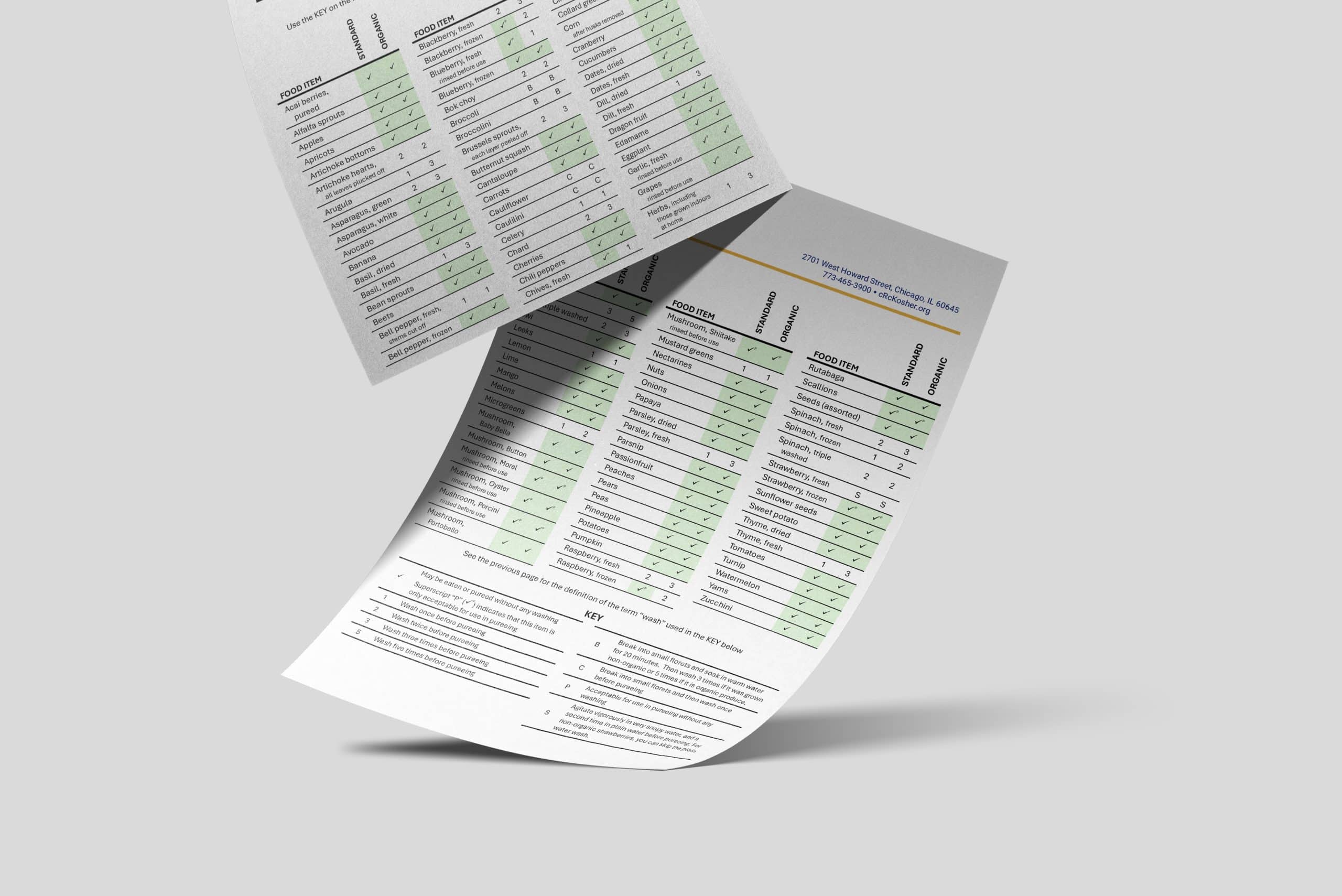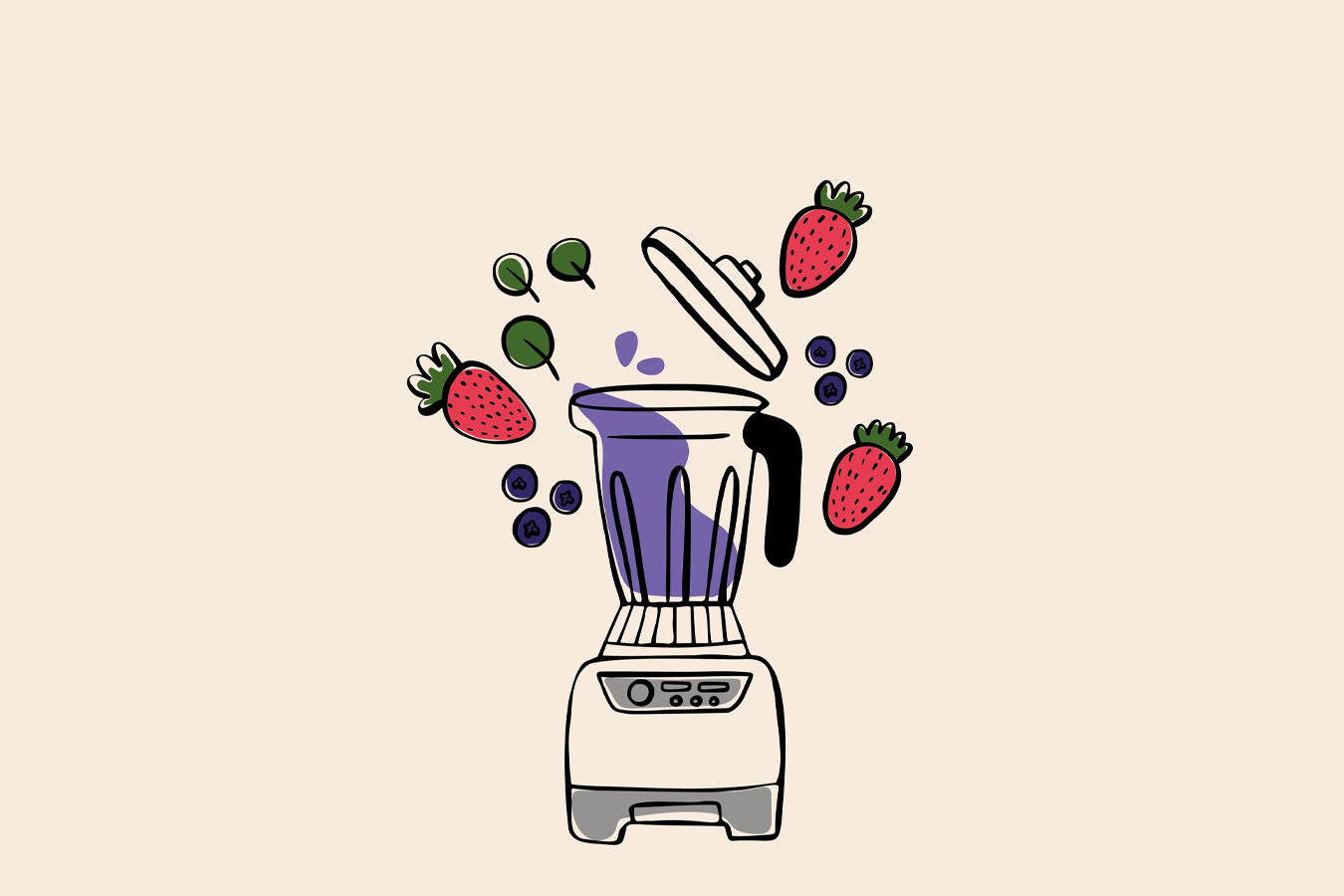What fruit and vegetables need to be washed or checked before blending in a smoothie? Can you blend fruit and vegetables that don’t have a hechsher?
The cRc (Chicago Rabbinical Council) recently concluded extensive research on which produce can be pureed without concerns for insects and how best to do it.
Download the cRc Guide to Pureeing Produce here
If some non-kosher food gets mixed with kosher food, the mixture will often be permitted if there is just a tiny bit of non-kosher and there is no way to find and remove it from the mix.
There are two limitations to that halacha that are relevant to our topic.
- A whole insect (beryah) cannot be batel (nullified), and for that reason, our discussion will focus on pureed foods where the likelihood is that any insects have been broken apart and are no longer whole.
- A second rule is that bitul is only effective if it happened accidentally, but one may not intentionally add a bit of non-kosher into food based on the assumption that it will be batel. What about if a person wants to puree broccoli, kale, strawberries, or some other vegetables which are known to be infested with insects? Should we view this as if he is “intentionally” adding those insects into his smoothie? Or should we say that he is blending vegetables, and the insects are getting in “accidentally”?
The Poskim say that the answer to this question depends on two factors. [See Shulchan Aruch YD 84:13, Shach 84:40, Taz YD 138:14, and Teshuvos Rebbi Akiva Eiger YD 77]. Firstly, there must be a reasonable possibility that the vegetable is free of infestation. In other words, the person may only puree those vegetables which are occasionally infested (known as “miut hamatzui”), which means there’s a realistic chance that this batch has no bugs in it. If, however, it is a vegetable that is often infested (known as “muchzak b’tolaim”), the likelihood of insects is so high that it is viewed as if the person is consciously adding the insects to the mix. Secondly, the person must make some minimal effort to remove any “easy to remove” insects from his food. If he doesn’t make this minimal effort, he is demonstrating that his intent is to nullify the insects. For example, he might rinse the vegetable under a stream of water; that will not necessarily remove all insects from the vegetable but will remove the “easy to remove” bugs allowing for the pureeing to take place.

The accompanying chart divides fruits and vegetables that will be pureed into three general categories. The first – indicated with a ✔ – are so rarely infested that they can be eaten without checking, even if they are not pureed. The second – indicated with a “P” – are foods which are infested to the level of miut hamatzui and would require washing or checking before eating as-is, but may be included in a pureed food without checking, as explained above. The last are those which are so infested (muchzak b’tolaim) that a meaningful washing is required to lower the infestation level to the point that pureeing will be permitted. The number and type of washing fluctuates from item to item (as indicated on the chart) based on infestation level and the effectiveness of washing for each item.
Bear in mind that these washing recommendations are specific to a situation where the foods will be pureed, and are likely insufficient for someone who wants to eat one of these fruits or vegetables as-is.




The chart doesn’t say which frozen things don’t need a hechsher .. where do I find that?
All recommendations apply equally to fresh or frozen items, unless otherwise noted.
In this context, “frozen” refers to items which were frozen by the manufacturer.
The headline-
Can you blend fruit and vegetables that don’t have a hechsher?
On the chart I don’t see what fruits and veggies don’t need a hechsher. Can I blend frozen strawberries without a marking at all?
Whatever information has been provided by the CRC is included on the PDF. For anything else, we can’t answer things which need to be asked to a Rav.